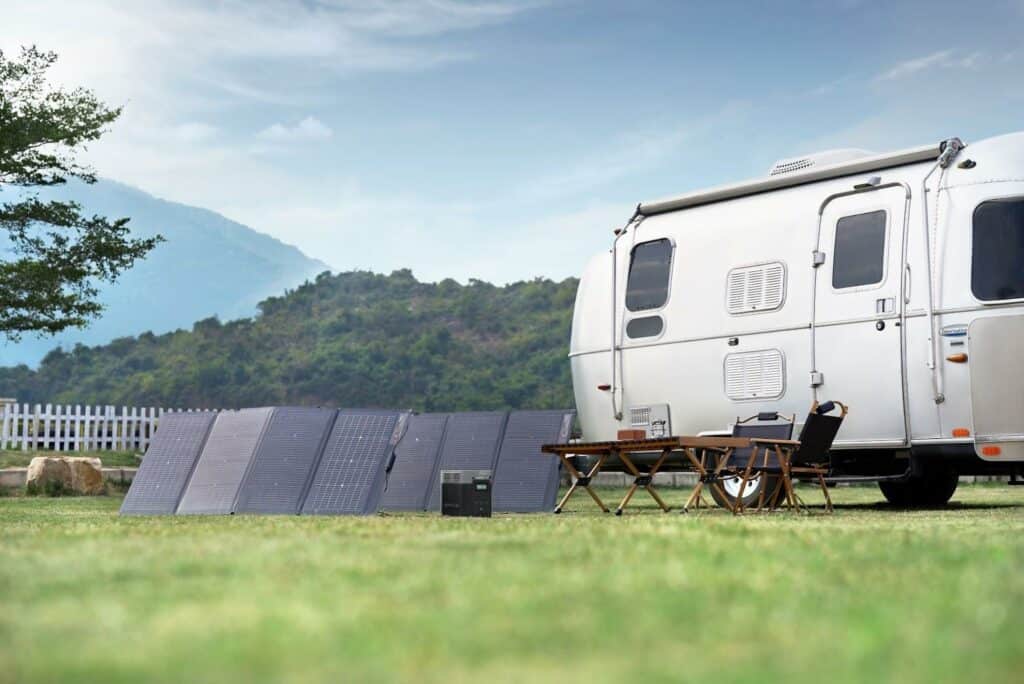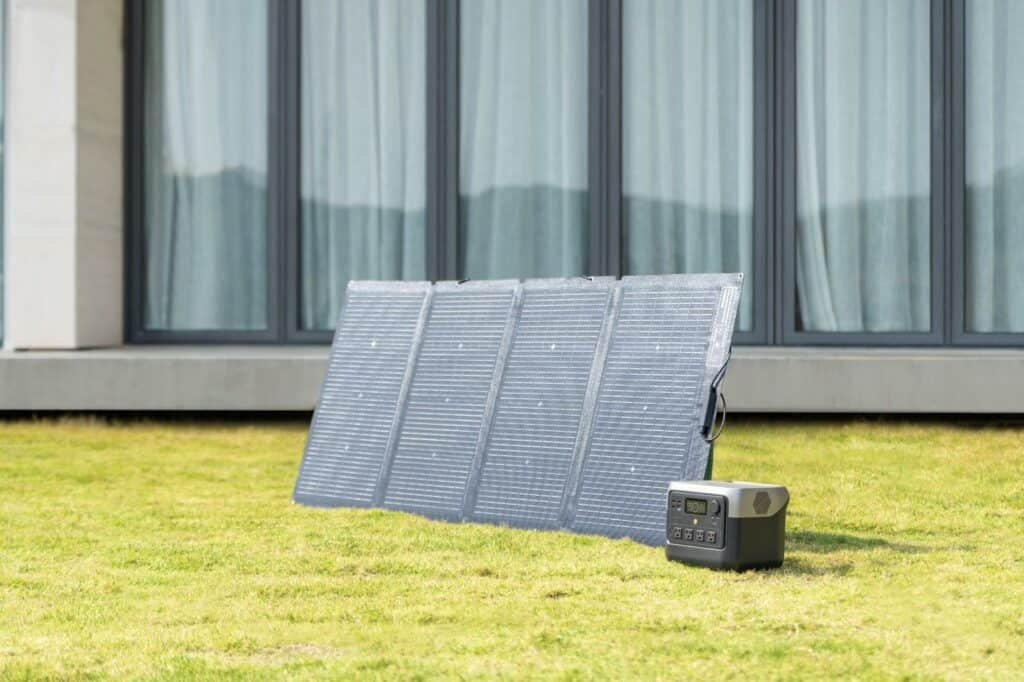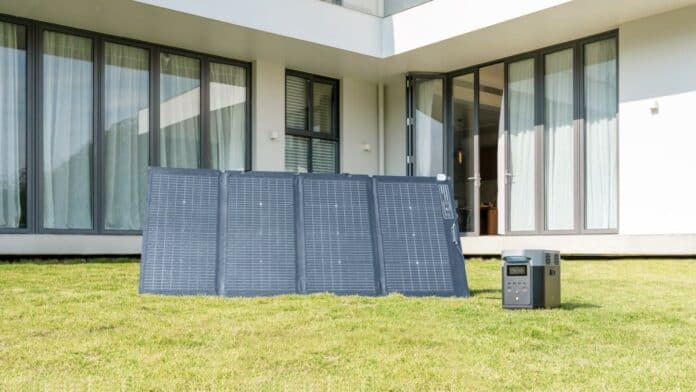Table of Contents
With so much misinformation about solar energy out there, it’s hard to know what you can and can’t trust. We’ve gathered some of the most common misconceptions about solar power in this article to help cut through the noise and set the record straight.
Maybe you’ll have heard of some of these misconceptions? Discover the truth about each myth to know facts from fiction regarding solar power.
Myth 1: 400W Solar Panels Are Guaranteed to Generate 400W of Electricity Per Hour
The rated power of a solar panel is a measurement of the maximum amount of electricity that a panel can produce under ideal conditions.
Of course, ideal conditions aren’t very common in practical applications, so you can’t expect your panels to always reach their maximum power generation level.
Some things that impact the amount of electricity your panels will generate include the temperature, the amount of direct sunlight they receive, efficiency, and more.
While a panel rarely produces its rated power, this is still a useful metric to help you determine how much electricity you can expect your panels to generate. You can use this information to estimate how many panels you’ll need in your solar power system to power your home and appliances.
Myth 2: You Can Add As Many Solar Panels As You Want To Your System
Another common myth: Your panels aren’t generating enough energy to power what you want them to, so just add more, right?
Wrong.
Typically, a solar power system includes a battery that stores generating electricity to be used during non-peak hours or when the sun isn’t shining. This battery commonly comes in the form of a portable power station.
The thing about portable power stations is that they have a spec referred to as solar charging input. In the case of the EcoFlow DELTA Pro Portable Power Station, this is 1,600W Max — meaning you can connect up to 4 x 400W panels.
Any more might not harm your portable power station, but it won’t help you generate any more electricity. In a case like this, you’d need to add an additional portable power station to your setup.
However, if your system is tied to the grid, you can sell additional electricity that your panels generate back to the utility company.
Myth 3: Solar Panels Don’t Work on Cloudy Days
As you probably know, solar panels generate electricity from the sun’s rays — so what happens on cloudy days?
It seems logical to assume that you won’t be generating power on these days, but fortunately, that’s not the case! While clouds may impact the amount of electricity your panels can generate (remember we talked earlier about how panels only generate their rated power in ideal conditions?), that’s certainly not enough of a reason to invest in having solar panels.
Myth 4: Solar Power is Too Expensive
You may have heard before that solar power is too expensive to be worth it. Well, that information is quite outdated!
Significant strides have been made in the affordability of solar panels over the years! In fact, in many parts of the United States, solar energy is already cheaper than fossil fuels.
And the advancements don’t stop here — the U.S. Department of Energy announced in March of 2021 its ambitious goal to cut solar energy costs by 60% by 2030.
Of course, the initial investment in your setup can be costly, but once you get through your solar payback period, all that is pure savings. On top of that, solar power incentives and tax credits can definitely tip the scales of affordability.

Myth 5: Solar Panels Aren’t Very Efficient
Many people hear about panels with efficiency rates in the low 20s and think panels aren’t efficient enough. This is because some sunlight is reflected off the panel and becomes heat rather than electricity. In addition, solar cell materials can’t absorb all the types of light that combine to make sunlight, such as infrared light.
The world record for a solar cell efficiency rating at room temperature with normal sunlight is 39% — however, these cells are too costly to be an effective home solution.
At EcoFlow, we’re pretty happy with our industry-best 23% efficiency rating in our rigid and portable panels, providing a good balance between efficiency and affordability.
Myth 6: Only Homeowners Can Go Solar
Don’t own a house and want to embrace sustainable energy?
You might think you’re out of luck — but you’re not.
Community solar programs allow renters to enjoy the benefits of solar energy by letting multiple people take advantage of a single, shared solar array. They might be installed off-site or on your building. The cost of purchase and installation is divided among everyone participating.
Myth 7: Homes Powered By Solar Will Still Have Power During a Grid Outage
This one is only sometimes true. To have power when the grid goes out, your system needs to include a battery that can store excess electricity that’s generated. Many home systems are tied to the grid and sell the excess power they generate back to the grid.
If this is the case for you, your lights will be out along with the rest of the street when the grid fails. However, this isn’t necessarily true if your panels are connected to a battery. If you have enough electricity stored in your battery, your home will keep running.
Myth 8: Solar Panels Damage Your Roof
This is a common — and understandable — concern of many homeowners looking to go solar. So, will solar panel installations damage the roof of your home?
Fortunately, no — as long as the panels are installed by a professional, there’s minimal risk of any permanent issues resulting from your panel installation.
Myth 9: Solar Energy Makes Electricity Bills a Thing of the Past
Does a solar power system in your home make your electricity bills vanish?
Not usually, but they can significantly decrease your monthly spending. Factors like electricity rates in your state, average sun hours, and more will impact how much savings you’ll see.
If your home is connected to the grid, you probably won’t see your electricity bills go away completely, even if you’re producing as much power as you consume. This is because your utility company typically doesn’t just charge you for supply; they also charge you for transmission and distribution.
You can see the supply aspect of your electric bill vanish, but your utility company likely charges any property with active electrical service a transmission and distribution charge. If you’re connected to the grid, this isn’t going anywhere — but without the supply charge, you’ll probably see a drastic decrease in what you’re paying.
Myth 10: Solar Panels Aren’t Eco-Friendly at the End of Their Lifetime
No form of electricity is 100% eco-friendly, and solar power is no exception. While it’s true that there are some drawbacks regarding the eco-friendliness of panels related to their manufacture and disposal, overall, the environmental benefits of solar power greatly outnumber the costs, especially in comparison to fossil fuels.

Final Thoughts
With so much being said about using the sun’s rays for energy — both positive and negative — it can be difficult to know what’s true and what’s not.
With these ten myths debunked, you can now rest assured that you’re a bit more in the know about the truth behind solar power.
Ready to make the switch? Check out EcoFlow selection of solar panels and portable power stations here.
